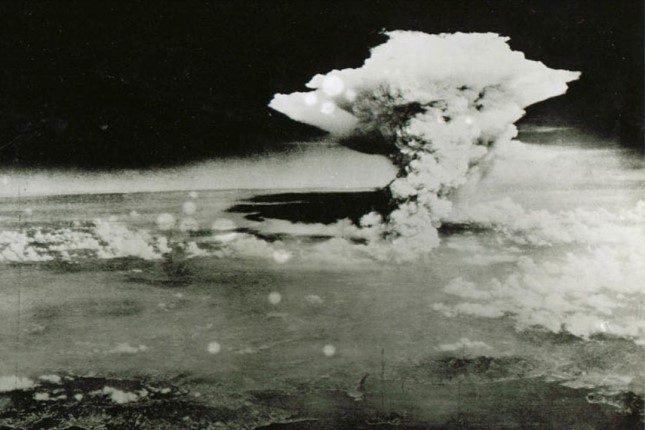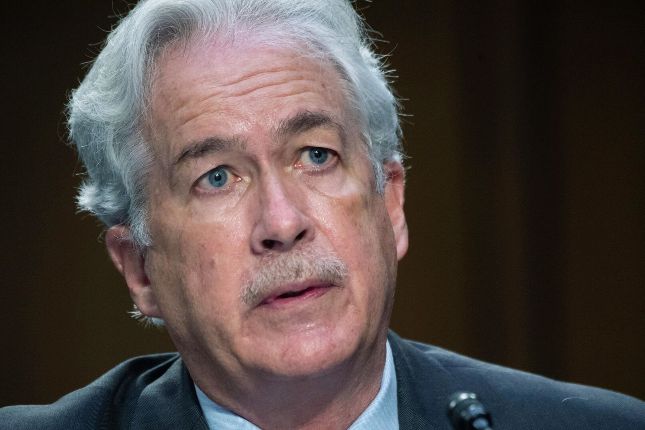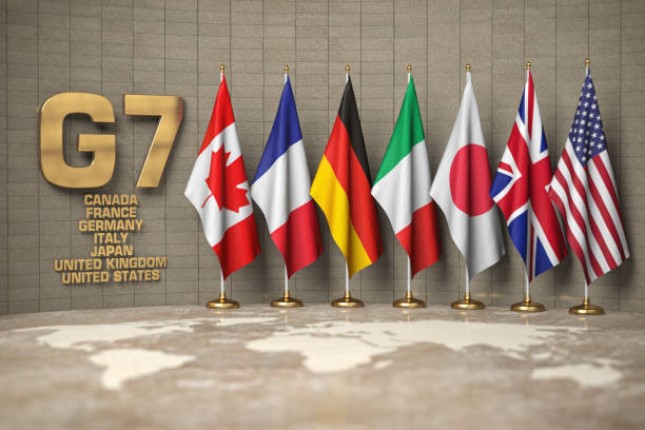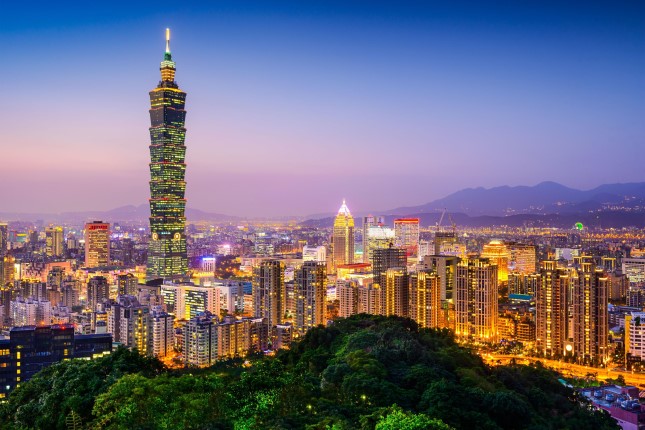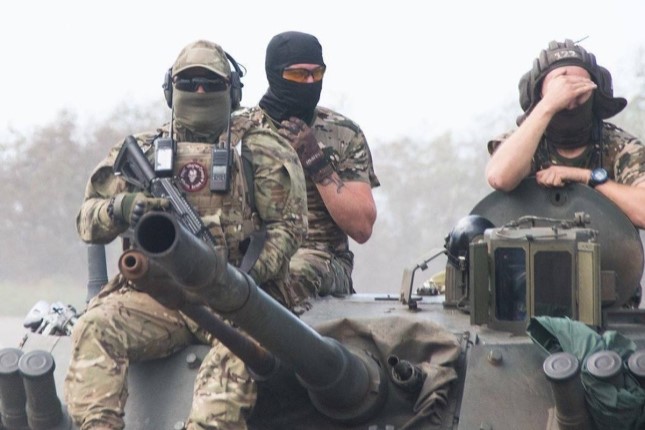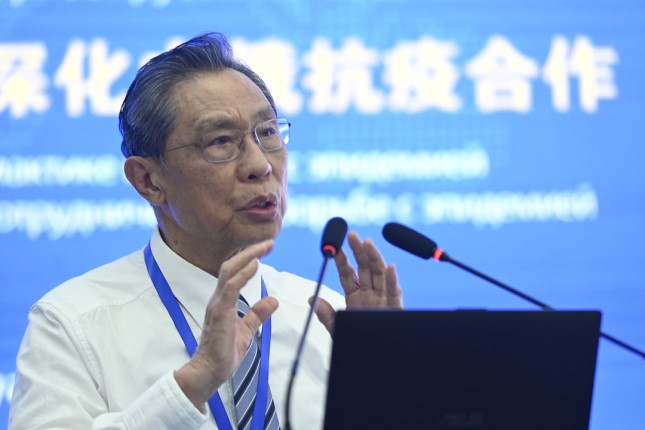On August 6, 1945, 78 years ago, a US B-29 Superfortress bomber, ordered to carry out its mission by President Harry Truman, dropped an atomic bomb nicknamed “Little Boy” on the Japanese city of Hiroshima.
The National WWII Museum writes that the bomb “engulfed the city in a blinding flash of heat and light. The temperature at ground level reached 7,000 degrees Fahrenheit in less than a second. The bomb vaporized people half a mile away from ground zero. Bronze statues melted, roof tiles fused together, and the exposed skin of people miles away burned from the intense infrared energy unleashed. At least 80,000 people died instantly.” The bomb destroyed 70 percent of all buildings in Hiroshima and an estimated 140,000 people had died by the end of 1945. Survivors suffered from increased rates of cancer and chronic disease.
The National Museum of Nuclear Science and History explains that those “close to the epicenter of the explosion were simply vaporized by the intensity of the heat. One man left only a dark shadow on the steps of a bank as he sat. … Many others in Hiroshima, farther from the Little Boy epicenter, survived the initial explosion but were severely wounded, including injuries from and burns across much of their body. Among these people, panic and chaos were rampant as they struggled to find food and water, medical assistance, friends and relatives and to flee the firestorms that engulfed many residential areas.”
A witness: “The appearance of people was … well, they all had skin blackened by burns. … They had no hair because their hair was burned, and at a glance you couldn’t tell whether you were looking at them from in front or in back. … Many of them died along the road—I can still picture them in my mind—like walking ghosts. … They didn’t look like people of this world.”
Three days later, before Japanese authorities had even had the opportunity to evaluate the situation, Truman authorized a second, slightly larger bomb, “Fat Man,” to be detonated in the city of Nagasaki. “It is estimated that between 40,000 and 75,000 people [in Nagasaki] died immediately following the atomic explosion, while another 60,000 people suffered severe injuries. Total deaths by the end of 1945 may have reached 80,000.” (National Museum of Nuclear Science and History) Some 200,000 to 250,000 people in the two cities died directly from the US action and countless more in years to come.
These bombings constitute one of the most horrific war crimes ever committed. To this day, only the US government and military, the self-proclaimed leadership of the “free world,” have used nuclear weapons.
Physicist Leo Szilard subsequently argued that had Nazi Germany dropped atomic bombs on two US cities, but proceeded to lose the war, “Can anyone doubt that we would then have defined the dropping of atomic bombs on cities as a war crime, and that we would have sentenced the Germans who were guilty of this crime to death at Nuremberg and hanged them?”
No military necessity, in conventional bourgeois terms, justified the destruction of Hiroshima and Nagasaki and their populations, as every objective observer has pointed out. Japan was a defeated adversary by this time. Even warmonger Gen. Douglas MacArthur later explained to journalist and author Norman Cousins that he had seen “no military justification for the dropping of the bomb. The war might have ended weeks earlier, he [MacArthur] said, if the United States had agreed, as it later did anyway, to the retention of the institution of the emperor.”
Dwight D. Eisenhower wrote about his “grave misgivings” in his memoir. “Japan was already defeated and … dropping the bomb was completely unnecessary … I thought that our country should avoid shocking world opinion by the use of a weapon whose employment was, I thought, no longer mandatory as a measure to save American lives.”
The latter argument, that the bombing had saved “American lives,” which the US media still circulates, was a ex post facto fiction manufactured to excuse the horrific, bloody action.
The more profound motives behind the bombings involved American imperialism’s goal of terrorizing the Soviet Union as part of the already unfolding Cold War. As the recent film Oppenheimer made clear, “Trinity,” the code name for the first test of a nuclear weapon, was scheduled for July 16, 1945, so that Truman could hold the existence of the bomb over the heads of Stalin and the Soviet delegation at the Potsdam Conference, which opened the following day. According to this line of thinking, the US would have no need to make concessions and could force the Soviet leadership to submit to its demands.
When the bomb was developed as part of the Manhattan Project, the Truman administration imagined that its supposed nuclear monopoly would ensure the hegemonic role of the US for years to come. This notion was considered delusional by scientists, who understood that it was only a matter of time before the USSR would develop the bomb. Truman was ignorant enough, in fact, to assert that “those Asiatics” (in the Soviet Union) could never build so complicated a weapon.
When the USSR concluded its first successful nuclear weapon test in August 1949, the event fueled paroxysms of anticommunism, as part of a process well under way by that time.
Shortly after that, in coordination with fascistic figures such as Gen. Curtis LeMay, the US Air Force War Plans Division developed a proposal, according to a LeMay profile in the New Yorker magazine in 1995, that “entailed destroying seventy Soviet cities in thirty days with a hundred and thirty-three atomic bombs, causing up to 2.7 million deaths and another four million casualties. American air-power strategists had a name for such an attack as LeMay was proposing: ‘killing a nation.’”
In a lecture he delivered to the National War College in April 1956, Le May argued for attacks on the Soviet Union, envisioning the possibility that between “sunset tonight and sunrise tomorrow morning the Soviet Union would likely cease to be a major military power or even a major nation. ... Dawn might break over a nation infinitely poorer than China—less populated than the United States and condemned to an agrarian existence perhaps for generations to come.”
The major factor determining that nuclear bombs were not in fact used by the US following the August 1945 bombings was the fear of retaliation from the Soviet Union, although figures such as LeMay argued for “preemptive” strikes before the USSR could develop its air defenses. Aside from the fear of Soviet retaliation, it seems certain that whatever extremely limited scruples the US ruling elite possessed would have been overridden with the same cold indifference as they had been in 1945.
During the decades of the Cold War, neither the US nor the USSR made use of these devastating weapons, in a relationship known as MAD, or “mutual assured destruction.” Scientists, however, have consistently warned that the existence of nuclear weapons inevitably would lead to their proliferation.
The official total of some 13,000 nuclear weapons is shared today between the US, Russia, China, France, the UK, Pakistan, India, Israel and North Korea, with six other nations known to be hosting them: Italy, Turkey, Belgium, Germany, Netherlands and Belarus.
The very existence of these weapons of mass destruction has posed the grave danger that at some point, in a time of intense crisis, they would be used, against foreign foes or even domestic opposition.
The anniversary of the Hiroshima bombing and the release of Oppenheimer, which has obviously struck a disturbing chord with audiences (the film has passed $550 million in global box office), have to be seen in the context of present-day developments.
The Biden administration and its NATO allies have all but openly repudiated the MAD doctrine, repeatedly arguing that they will not be “deterred” by the danger of nuclear war. This goes unchallenged, it is even applauded, by the US and European media. Such pronouncements came in response to concerns that the US was “so worried about nuclear weapons and World War III that we have allowed ourselves to be fully deterred,” in the words of Philip Breedlove, a retired four-star US Air Force general who led US forces in Europe and served as NATO’s supreme allied commander from 2013 to 2016.
The notion that the US is no longer “worried about nuclear weapons and World War III” can only mean, if language has any significance, that the American ruling elite intends to pursue its ruthless, predatory objectives regardless of the consequences. Not merely the possibility, but the inevitability of nuclear annihilation will not forestall the US government, or the governments of France, Britain and the NATO powers.
Total recklessness now prevails in ruling circles.
This is where we have arrived, 78 years after the Hiroshima catastrophe. In terms of bourgeois society, there is vast social, political and moral regression. The alternatives today are socialism or barbarism, the working class taking power or capitalism putting an end to human existence.
Photo: Firestorm cloud covers Hiroshima after the the initial detonation of the atomic bomb © Image Credit: US government.
Source: World Socialist Web Site.
